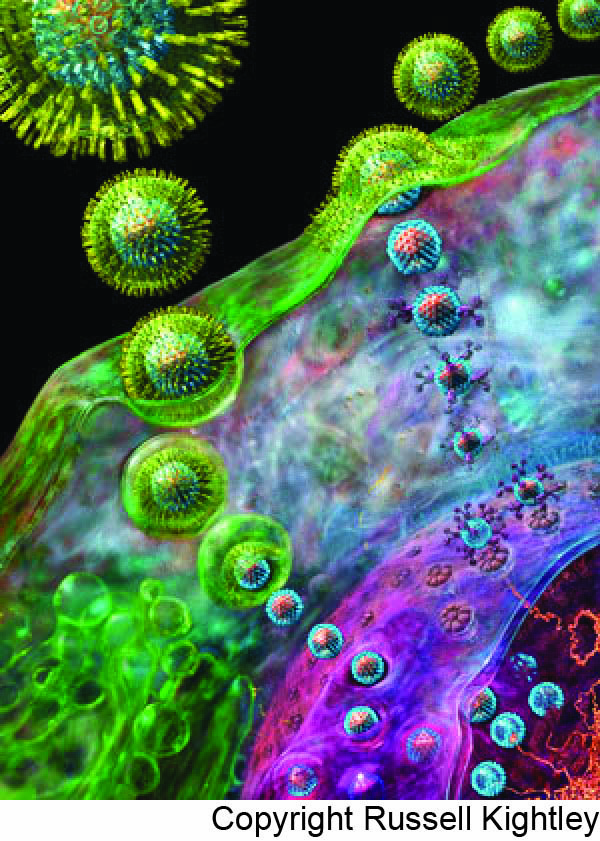Professor: Mary L. Kraft
University of Illinois
600 S Mathews Ave
208 RAL, MC-712
Urbana, IL 61801
phone: 217-333-2228
Influenza Virus Infection
The flu is a potentially life-threatening respiratory infection that is caused by the influenza virus.  The influenza virus must enter lung cells and use the cell’s machinery to replicate. Towards the end of this process, the newly synthesized viral components are transported to the plasma membrane, where they assemble into new virus particles. These new virus particles are enclosed within a fragment of the plasma membrane, forming the viral envelope, when they are released from the host cell.
The influenza virus must enter lung cells and use the cell’s machinery to replicate. Towards the end of this process, the newly synthesized viral components are transported to the plasma membrane, where they assemble into new virus particles. These new virus particles are enclosed within a fragment of the plasma membrane, forming the viral envelope, when they are released from the host cell.
Intriguing features of the influenza virus are that although the plasma membrane contains many different types of lipids, the viral envelope is enriched with just a few, namely cholesterol and sphingolipids. Additionally, reductions in the cellular cholesterol or sphingolipid levels are detrimental to influenza virus replication. Current hypotheses attribute this cholesterol- and sphingolipid-sensitive influenza replication to a mechanism in which the influenza virus exploits cholesterol- and sphingolipid-enriched domains in the host cell’s plasma membrane for assembly and budding.
We are using our unique ability to image specific lipids and proteins of interest with high-resolution SIMS to test the hypothesis that the influenza virus assembles and buds from plasma membrane domains that are enriched with cholesterol and sphingolipids. We are also combining this new imaging technique with traditional biochemical methods to elucidate the roles of the host cell’s cholesterol and sphingolipids in influenza virus replication. This work may enable the development of more effective anti-influenza therapeutics.